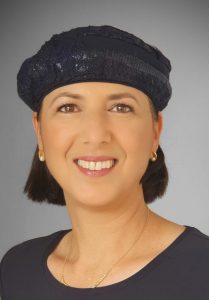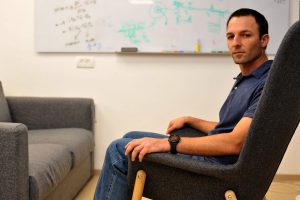Two Technion researchers won prestigious Proof of Concept grants from the European Commission for Research (ERC)
The grants are intended to promote the application and commercialization of academic research, including the establishment of a start-up company.
Two Technion faculty members have won Proof of Concept (PoC) grants from the European Commission for Research (ERC). The prestigious grants, each worth €150,000, are intended to promote the application and commercialization of academic research, including the establishment of a start-up company. They are awarded only to researchers who have won an ERC grant in the past. In the current round, 348 applications were submitted of which 166 research proposals were selected. Eighteen of the winning proposals were from Israelis, two of whom are faculty members at the Technion: Professor Shulamit Levenberg from the Faculty of Biomedical Engineering, and Professor Shahar Kvatinsky from the Andrew and Erna Viterbi Faculty of Electrical and Computer Engineering.
Prof. Shulamit Levenberg from the Faculty of Biomedical Engineering won an award for her innovative development for 3D bioprinting and post-printing tissue growth: Print and Grow
Three-dimensional (3D) bioprinting is one of the most promising technologies in the world for tissue engineering, and its corresponding leading technology is bioprinting using suspended hydrogels. In this method, hydrogel living cells are incorporated within bioinks extruded layer by layer onto a granular support material which undergo gelation through diverse cross-linking mechanisms. This technology provides precise fabrication of complex structures but turning the resulting structure into quasi-natural tissue requires additional steps after printing, including cell growth in those structures. At these stages a significant problem arises: the printed structures undergo various structural changes, including contraction and deformation, and the result is a gap between the desired engineered tissue and that actually obtained.
The solution developed at the Levenberg Laboratory is the Print and Grow concept. “With this technology,” explained Prof. Levenberg, “we achieve long-term structural stability of the printed structures, through a unique microwave, improved structural support and continuous real-time monitoring of tissue growth. The first experiments we did with the method led to a high life of the engineered tissue, while maintaining its desired structural properties (shape and size). We intend to improve the properties of the support materials and develop techniques suitable for different sizes, different tissue types, and production on a large scale. And the efficiency of bio-printing for tissue engineering, discovery of new drugs, and the civilized meat industry.”
Prof. Shahar Kvatinsky from the Andrew and Erna Viterbi Faculty of Electrical and Computer Engineering, received a grant for the development of Real Processing in Phase Change Memory (PCM). One of the bottlenecks in computer performance today is the communication between the two “brains” of the traditional computer – the processor and the memory. Although the capabilities of processors are improving at a rapid pace, the “dialogue” between the processor and memory requires a relatively long time that prolongs the performance of tasks on the computer. Based on the previous ERC grant he received (Starting Grants category), Prof. Kvatinsky developed an innovative unit called mMPU that combines processing and storage in the same cell. As part of the new grant, he intends to connect this to the “Phase Change Memory” (PCM) technology, which is based on monitoring changes in the electrical resistance of the material. This technology is already commercially available, and according to Prof. Kvatinsky, “A successful demonstration of a mMPU unit based on phase change memory may lead to the design and construction of fast and energy efficient computers, that are cheaper than existing computers. Such a breakthrough will dramatically affect different applications such as artificial intelligence, databases, and genomics.”
For the announcements of the ERC grants:
https://erc.europa.eu/news/erc-2021-proof-of-concept-grants-results




